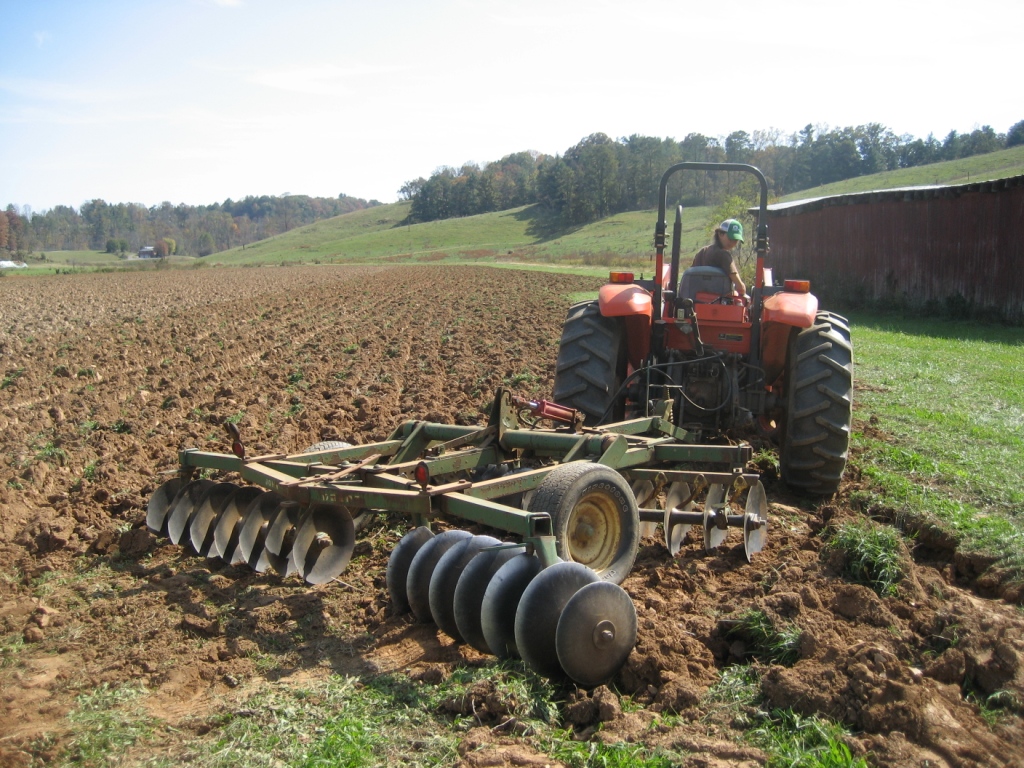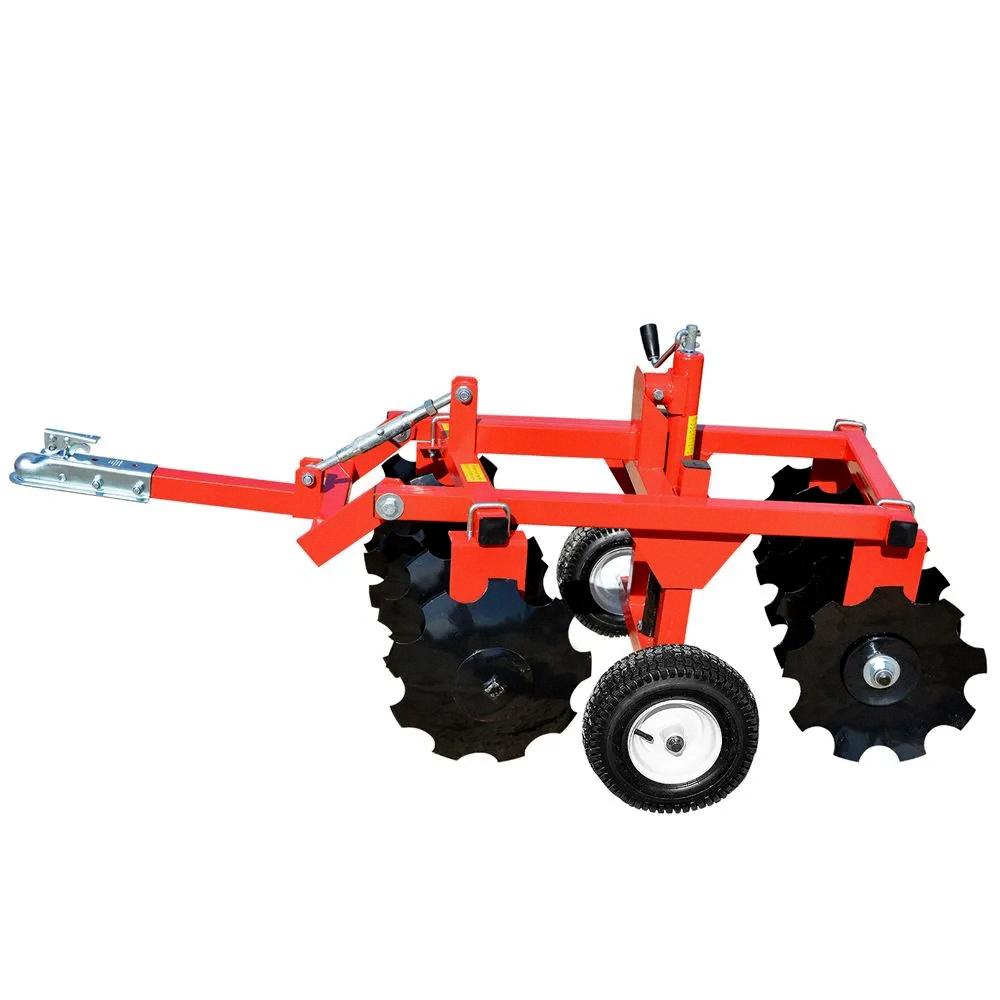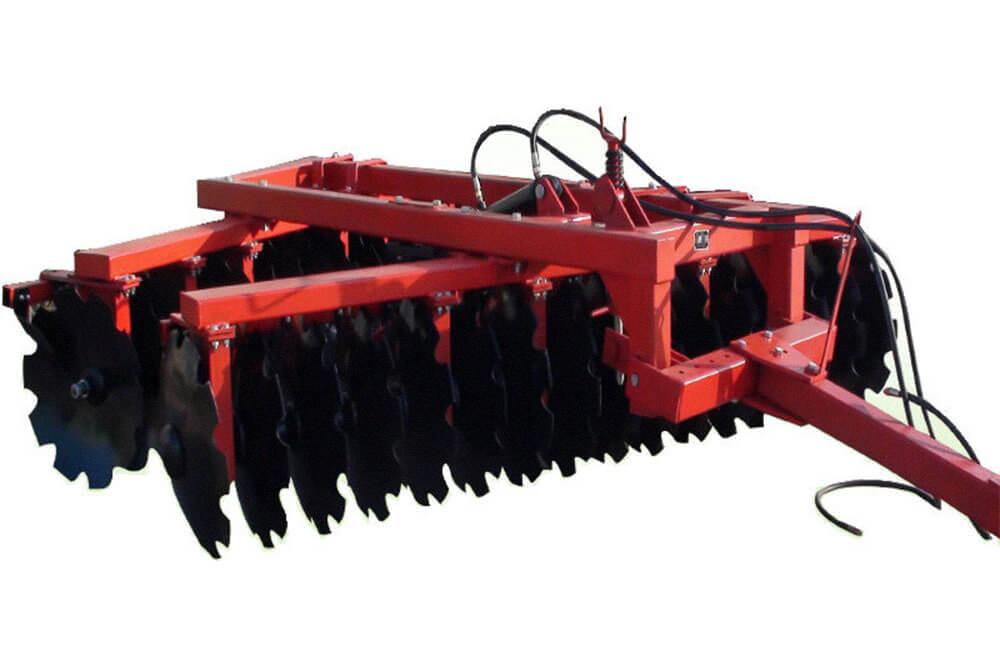Discing is an essential tillage practice that farmers use for soil preparation. It involves the use of a disc harrow, which is a piece of farm machinery designed to break down soil clods. This process allows water to penetrate more easily and increases soil aeration, which enhances the activity of the soil flora and fauna.
Disking is a relatively inexpensive alternative to heavier mechanical operations such as shearing and raking. It is a valuable technique for farmers who want to prepare their soil for planting without incurring high costs. Disking fractures compacted soils, which improves root growth and development. It also allows for better aeration and moisture infiltration into the soil, which is essential for healthy plant growth.
Disking is especially useful for farmers dealing with heavy soils. These soils tend to become compacted, making it difficult for roots to penetrate and grow. Disking breaks up the compacted soil, creating space for roots to grow and develop. This, in turn, leads to better water and nutrient uptake, resulting in healthy and robust plants.
In addition to improving soil structure, disking also helps to control weeds. Weeds are a common problem in most farms, and they can be detrimental to crop yield. By breaking up the soil, disk harrows uproot weeds, which reduces their population and prevents them from competing with crops for nutrients.
Disking is a simple process that can be done by attaching a disc harrow to a tractor. The tractor then drives over the land, and the disc harrow breaks up the soil. Depending on the soil type and condition, farmers may need to repeat the process several times to achieve the desired results.
Discing is an essential tillage practice that farmers use to prepare their soil for planting. It is an inexpensive alternative to heavier mechanical operations and helps to improve soil structure, control weeds, and promote healthy plant growth. By usig a disc harrow, farmers can break up compacted soils, creating space for roots to grow and develop, leading to better water and nutrient uptake, resulting in healthy and robust plants.
The Difference Between Discing and Disking a Field
Both terms, discing and disking, are commonly used in the agricultural industry to refer to the tillage practice of using a disc harrow to break down soil clods. The term “discing” is more commonly used in the western United States, whie “disking” is more commonly used in the eastern United States.
Regardless of the term used, the practice of discing or disking a field is an important step in soil preparation for planting crops. It helps to break up soil clods, increase soil aeration, and promote the activity of soil microorganisms. This, in turn, can improve soil fertility and crop yields.
Overall, both terms are acceptable and commonly used, and the choice of terminology may depend on regional or personal preference.

The Benefits of Discing in Farming
Discing is a common farming practice that involves using a disk harrow or a set of disks attached to a tractor to break up and loosen the soil. The disks are designed to cut into the soil and break up any compacted areas, creating a more aerated and porous soil structure. This process helps to improve soil drainage, allowing for beter water infiltration and reducing the risk of soil erosion. Additionally, discing can help to incorporate organic matter such as crop residues and manure into the soil, which can provide valuable nutrients for plant growth. Overall, discing is an effective and cost-efficient way to prepare soil for planting by improving soil quality, promoting root development and ultimately increasing crop yields.
The Correct Spelling of ‘Disc’ or ‘Disk’
The answer to whether disc or disk is correct depends on the context and the geographic location. In American English, disk is the preferred spelling, especially when referring to computer-related objects such as a hard disk or floppy disk. On the othr hand, in British English, disc is the preferred spelling, particularly when referring to optical discs such as CDs, DVDs, or Blu-ray discs. However, it’s worth noting that both spellings are acceptable in both regions, and the two terms are often used interchangeably. It’s essential to keep in mind the context and audience when deciding which spelling to use to avoid confusion or misunderstanding.
The Difference Between Discing and Tilling
Discing and tilling are two common methods used to prepare soil for planting. The main difference between the two is the depth at which they work the soil.
Discing, also known as using a disc harrow, involves using a series of angled metal discs to cut and break up the soil. These discs are arranged in a way that allows them to penetrate deeper into the soil, making it easier to break up clumps and loosen compacted soil. Discing is ideal for preparing soil for planting by breaking up soil at depths of 4 to 8 inches. This process is ideal for getting to the deeper layers of the soil and for removing any weeds or crop residue.
On the other hand, tilling, also known as using a rotary tiller or cultivator, works the soil at a shallower depth, typically between 2 to 4 inches. This method uses rotating blades or tines to turn over the top layer of soil and break it up, creating a loose and aerated surface that is ideal for planting. Tilling is useul for preparing small garden plots or raised beds, or for incorporating organic matter into the soil.
To summarize, discing works at a deeper level to break up compacted soil and remove weeds or crop residue, while tilling works at a shallower depth to create a loose and aerated surface for planting or incorporating organic matter. The choice between discing and tilling depends on the specific needs of the soil and the planting project at hand.
The Synonym of Disk
A disk synonym is a word or term that can be used interchangeably with the word “disk”. Some common synonyms for disk include disc, plate, platter, circle, discus, dish, flan and quoit. These terms refer to a flat, circular object that is typically used for various purposes such as storing data, playing music or movies, or serving food. Whether you choose to use the word “disk” or one of its synonyms will depend on the context and the specific meaning you wish to convey. However, all of thse words can be used to refer to the same general type of object.
The Difference Between Discing and Harrowing
Discing and harrowing are both essential processes in preparing soil for planting, but they differ in their objectives and methods. Discing involves the use of a disc harrow, which is a piece of equipment with multiple discs that rotate and break up large clumps of dirt. Discing is primarily used to prepare the soil for planting by creating a smooth, level surface and breaking up any large chunks of soil that may impede the growth of crops.
On the other hand, harrowing involves the use of a harrow, which is a piece of equipment with tines or chains that drag acoss the soil’s surface, breaking up clumps and leveling the soil. Harrowing is used to improve soil structure and promote the growth of plants by creating a fine, loose surface layer that allows water, air, and nutrients to penetrate the soil more easily. Harrowing is also useful for spreading seed evenly and covering it with soil.
In summary, discing and harrowing are both important processes in preparing soil for planting, but they differ in their objectives and methods. Discing is used to break up large clumps of dirt and create a smooth, level surface for planting, while harrowing is used to improve soil structure and promote plant growth by creating a fine, loose surface layer.
The Meaning of Discing Soil
To disc soil means to use a tool called a disc harrow to prepare the soil for planting. A disc harrow consists of multiple concave metal discs that are attached to a frame and pulled behind a tractor. These discs are designed to cut trough the soil, breaking it up and creating a more uniform surface. This process helps to remove weeds, rocks, and other debris from the soil, as well as improving aeration and water penetration. Discing also helps to mix in any organic matter or fertilizers that have been added to the soil. Overall, discing is an important step in preparing a field for planting, as it helps to create an optimal growing environment for crops.

Source: agrisupply.com
Discing a Field: How Fast Should You Go?
When it coes to discing a field, the optimal operating speed is typically around 4-6 miles per hour. This speed allows the discs to properly till and break up the soil without causing too much soil disturbance or leaving clumps of soil behind. However, if you are working with sandier soils, you may be able to increase your speed up to 8 miles per hour. It’s important to note that the right speed for your specific soil conditions may vary, so it’s always a good idea to make a few test passes at different speeds and measure the furrow depth to determine the most effective discing speed for your field. By finding the right speed for your soil, you can ensure that you are achieving optimal tillage and creating a healthy environment for your crops to grow.
Is ‘Disc’ a Real Word?
Yes, disc is a real word. It is a variant spelling of the word “disk”, which is used to refer to a flat, circular object with a thin, rounded shape. The term is commonly used in a variety of contexts, including in reference to computer storage devices, optical media, and sports equipment such as frisbees and discs used in disc golf. The difference in spelling between “disc” and “disk” is primarily a matter of regional variation, with “disc” beig more commonly used in British English and “disk” being more commonly used in American English. However, both spellings are considered correct and can be used interchangeably in most cases.
The Use of Discs
A disc, which is an optical data storage device, is primarily used to store digital data such as music, photos, videos, software programs, and other types of information. It is a round, flat, and ridged medium that is written to usng a laser. The information is stored in the form of microscopic pits and lands on the surface of the disc, which are read by a laser beam. There are different types of discs available, including Blu-ray, CD, and DVD, with varying storage capacities and compatibility with different devices. Discs are widely used for various purposes, such as distributing movies, music albums, and software programs, backing up important data, and sharing files with others. They are a reliable and convenient means of storing and accessing digital information.
Is Disc an Abbreviation?
Yes, disc is actually a shortened form of the word “discus” which comes from the Greek word “diskos” meaning “a circular object or plate”. The term “disc” has been used to refer to various circular objects, such as discus throw, Frisbee, CD/DVD discs, and phonograph records. In fact, the French adopted the word “disc” for phonograph records to create its word for a music club, discotheque, which was originally a “disc library”. From there, the term “disco” was shortened and the 70s music craze known as “disco” came about. So, whle “disc” may seem like a simple and short word, it actually has a rich history and linguistic heritage.

Source: farming-machine.com
Conclusion
To conclude, discing is an essential tillage practice that farmers use to prepare their soil for planting. It involves the use of a disc harrow to break down soil clods and improve soil aeration, whch enhances the activity of the soil flora and fauna. Disking is a cost-effective alternative to heavier mechanical operations such as shearing and raking. It fractures compacted soils, allowing for better root growth and development, as well as improved moisture infiltration into the soil. Remember that “disk” is the preferred spelling in American English, and “disc” is the preferred spelling in British English. Regardless of the spelling, discing remains a crucial step in soil preparation for successful crop production.
